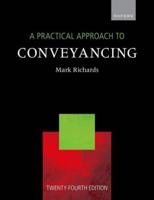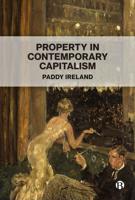Publisher's Synopsis
This book explores the real-world problem of building safety through the lens of private law.
The fire at Grenfell Tower, London, England and the collapse of Champlain Towers South, Florida, USA exposed widespread building safety failures globally. Using a variety of different private law perspectives ranging through torts, contract and real property law, international experts examine building safety failures across the UK, USA, Australia, Singapore, New Zealand, Italy and Canada. The book offers policymakers, practitioners, and scholars ground-breaking consideration of this vital yet under-considered aspect of the building safety crisis, along with new and valuable insights into the nature, limits and utility of private law.
The collection of essays shows that private law can be part of the solution to - as well as being part of the cause of - the building safety crisis. Consideration is given to existing legislative and judicial responses to the crisis, offering guidance as to how statutory regimes addressing the building safety problem (such as the Building Safety Act 2022) can best be understood and developed. A central lesson is the need to take an integrated, coherent approach, within and beyond private law. The book also illustrates that an understanding of the causes of, and responses to, the building safety crisis is vital to any theory of private law: private law is unable to fulfil its distinctive and crucial role of ordering our relations, one to another, if we adopt an unduly limited view of the reasons and resources available to it.
The book results from a joint research project by the Faculty of Law at the University of Oxford and Melbourne Law School at the University of Melbourne.







